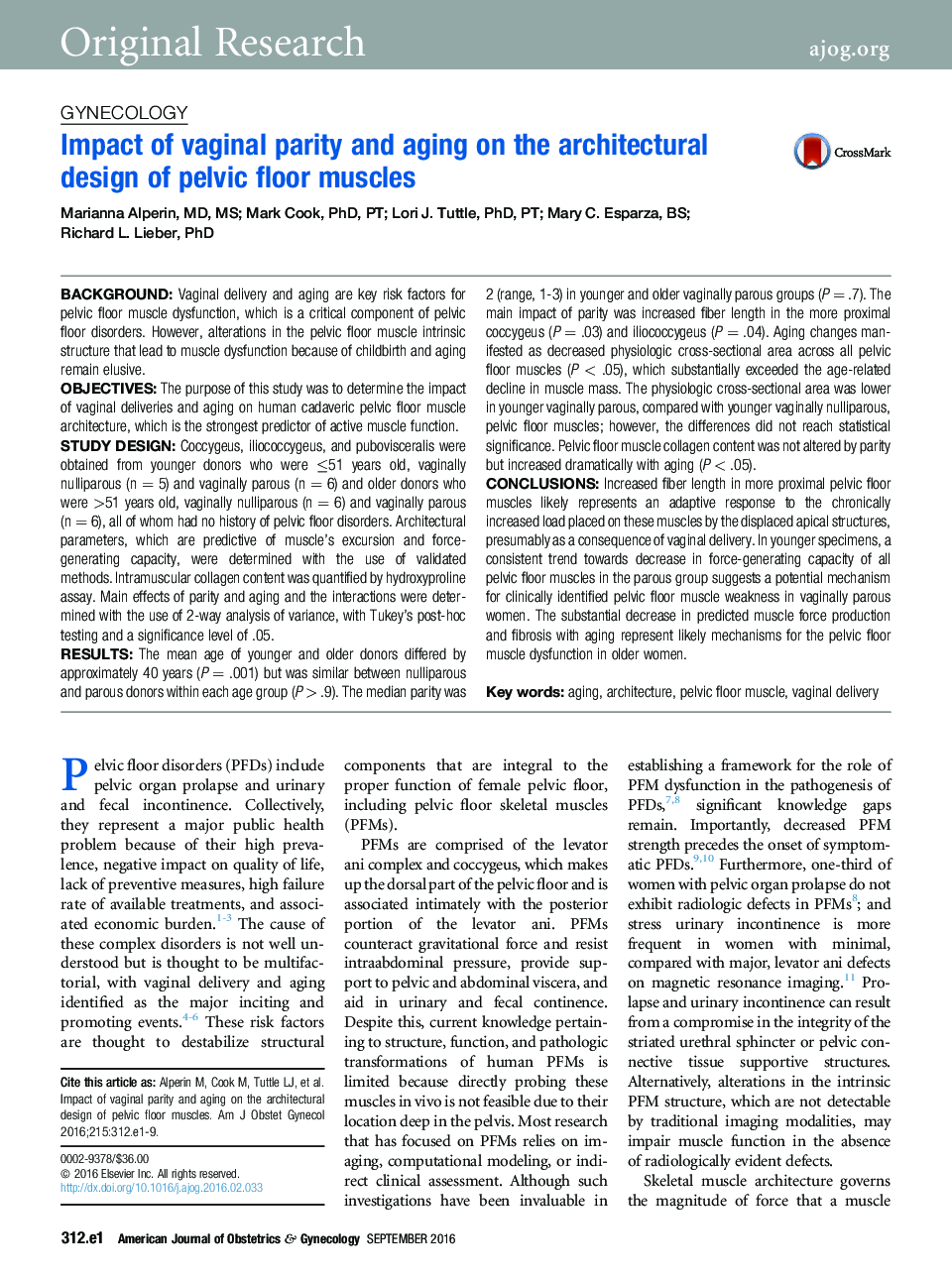| Article ID | Journal | Published Year | Pages | File Type |
|---|---|---|---|---|
| 3432117 | American Journal of Obstetrics and Gynecology | 2016 | 9 Pages |
Abstract
Increased fiber length in more proximal pelvic floor muscles likely represents an adaptive response to the chronically increased load placed on these muscles by the displaced apical structures, presumably as a consequence of vaginal delivery. In younger specimens, a consistent trend towards decrease in force-generating capacity of all pelvic floor muscles in the parous group suggests a potential mechanism for clinically identified pelvic floor muscle weakness in vaginally parous women. The substantial decrease in predicted muscle force production and fibrosis with aging represent likely mechanisms for the pelvic floor muscle dysfunction in older women.
Related Topics
Health Sciences
Medicine and Dentistry
Medicine and Dentistry (General)
Authors
Marianna MD, MS, Mark PhD, PT, Lori J. PhD, PT, Mary C. BS, Richard L. PhD,
